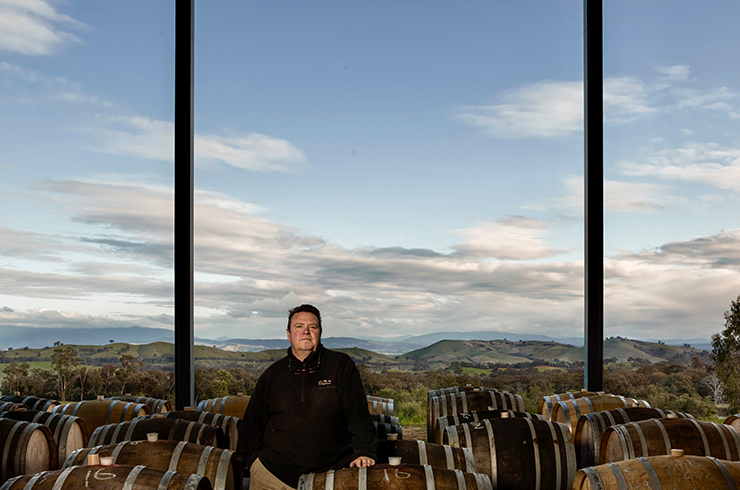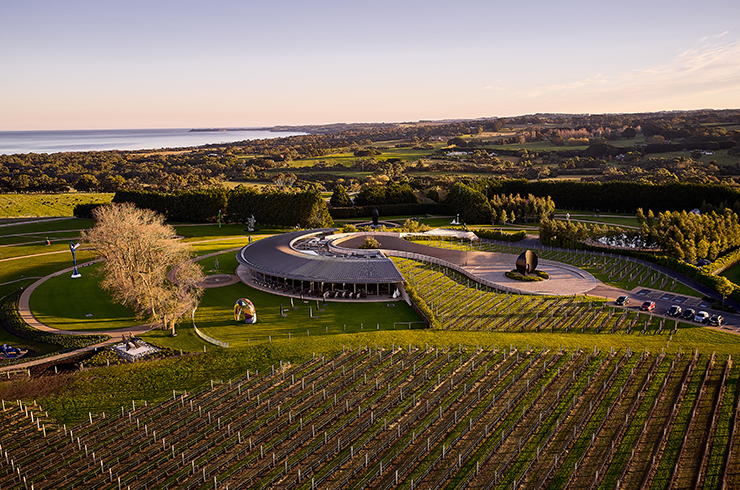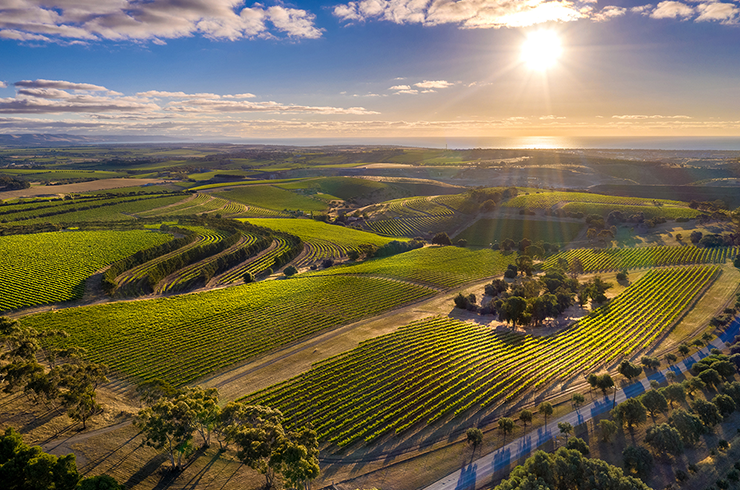The display cellar at Melbourne’s Society restaurant is both a serene and ostentatious affair, with rare bottles racked on both sides of a glass-doored corridor, shielded from the erosive effects of the world. Loïc Avril, head of wine for Lucas Restaurants, oversees the slick Collins Street fine diner’s 1900-bin list, which includes deep verticals of Domaine de la Romanée-Conti and stretches back to a 1929 Cheval Blanc.
Loïc has the benefit of ideal cellaring conditions, but it takes a meaningful investment to mirror this at home, even modestly. However, it’s best to be realistic if not installing climate-control equipment, he says. “It’s always risky to keep your wines at home. Even the coolest part of most houses is always fluctuating in temperature. So, I would advise not to. Or if you do, then for a short time.”
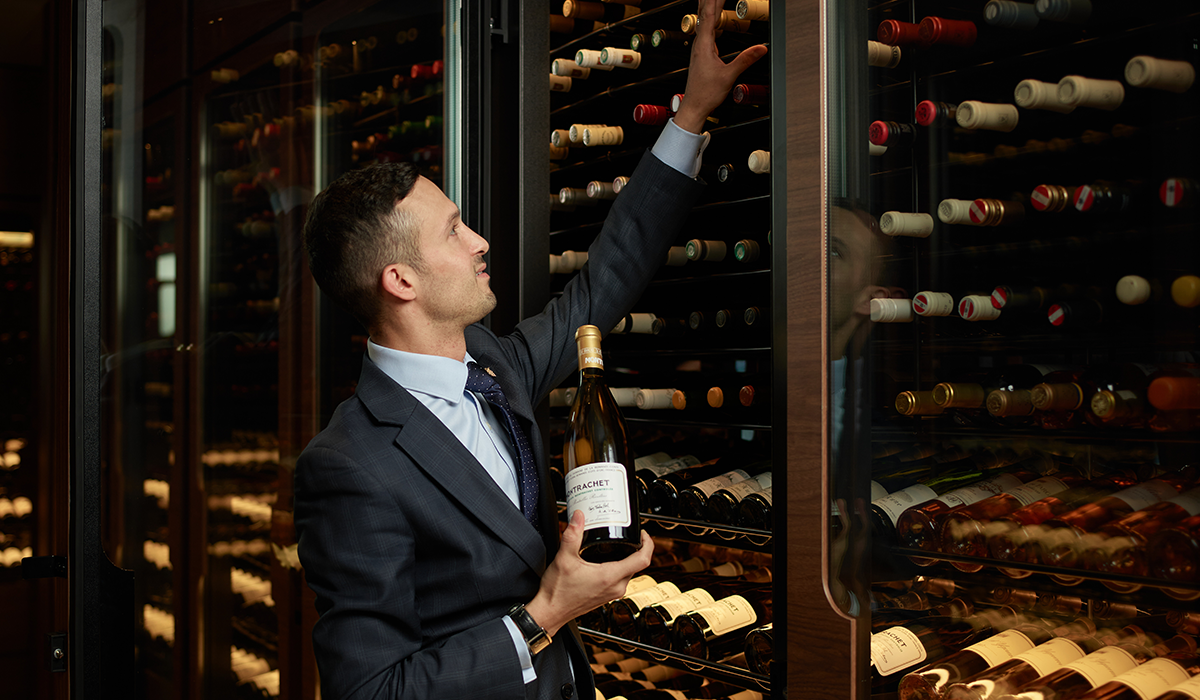
He recommends starting out with an under-counter wine cabinet, with most familiar brands performing well. But he believes that this type of cabinet is for holding wines for earlier consumption. “It’s a good way to keep wines for a shorter amount of time, but not for the long term, because a fridge is not a cellar,” he says. “If you have the opportunity, also use an off-site cellar.”
Emma Farrelly is the director of wine and beverages for Perth’s State Buildings, which, along with retail and the luxurious COMO The Treasury hotel, covers some of Perth’s most loved venues, including Wine Merchant, Wildflower, Long Chim and Post. Emma is about to launch State Cellars, an offsite storage facility that also houses 33 private cellars. With onsite sommeliers and a calendar of events, it bucks the trend of faceless, functional storage facilities. “These are very beautiful,” she says. “And the idea is to create a community of like-minded wine people.”
Community is key for Emma, who says exposure to new wine experiences is not always easy for consumers, but expanding horizons by tasting and talking is vital when building an interesting and varied cellar. “Even the people who a re very wine savvy have heaps of stuff they know they love,” she says. “But they’d love to know more about other things. So, they’re open to our recommendations.”

“You put wine in your cellar for it to improve. But a cellar is not a tomb; it’s not a place to bury wine forever,” says Luke Wills, beverage manager for Brisbane’s Anyday group (Agnes, Bianca, Hôntô, Same Same). “A lot of people underestimate how much pleasure a cellar can deliver over a 12- to 24-month period.”
Without naturally regulated conditions, cellars rely on technology, which requires monitoring. “It needs to be maintained,” Luke says. “When we renovated Agnes, the thermostat wigged out in one of the fridges and it turned into a heater. Inside the venue it was 18°C, and that fridge was at 38°C. It was the sweet wine fridge, so we lost a heap of TBAs [trockenbeerenauslese] and stuff like that… We opened them. It’s not often your staff get to see those wines!”
At the Tasman, a Marriott Luxury Collection Hotel in Hobart that houses lauded Italian restaurant Peppina, Michael Fisher is the beverage manager and sommelier. “When I first started my own cellar, I thought only bigger wines would last, but my tastes have changed. I have found so much joy cellaring chardonnay, pinot noir, barbera and Langhe nebbiolo,” he says, noting that it’s best to buy in multiples and check in to follow progress and ensure your current cellar matches your preferences.
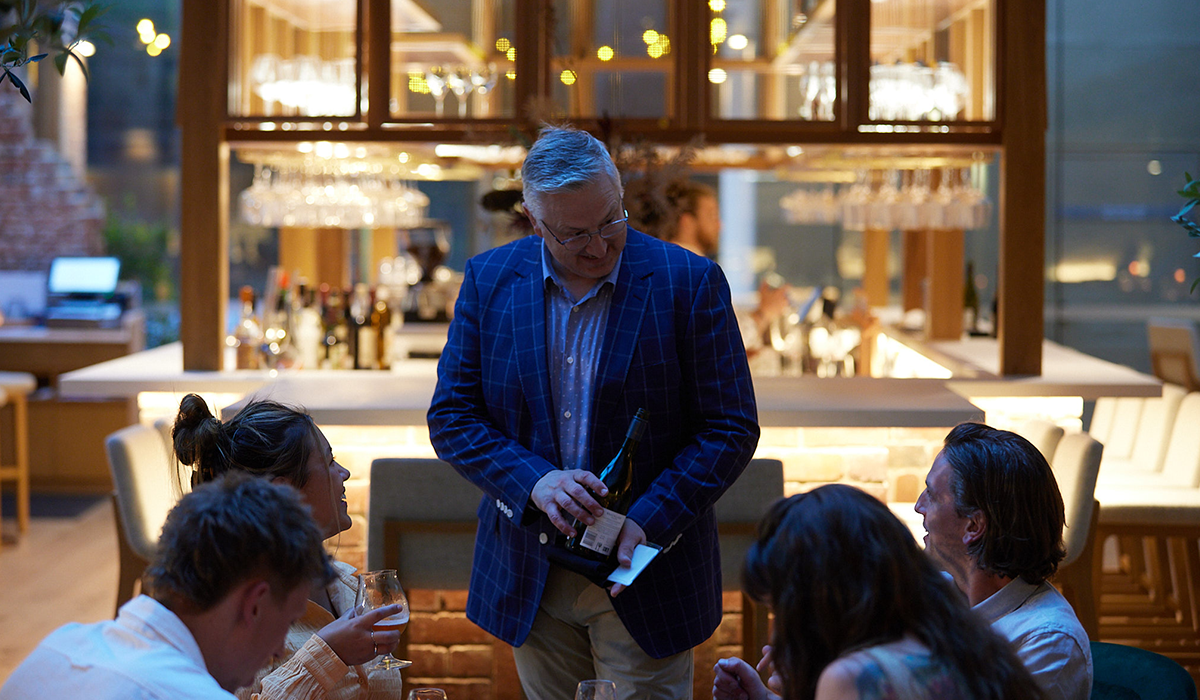
“You don’t want to keep adding and not drinking,” agrees Emma. “I usually recommend buying a case, depending on the wine, and drink one [bottle] every year. Don’t forget about them… and in five, 10 years have a case of something you don’t enjoy. Keep it active.” She recommends not letting wines go over the hill if you don’t enjoy them; give them to someone who will or send them to auction.
Massimo Mele’s 190-seat restaurant Peppina is part homage to his nonna’s cooking, with the Tasmanian-born chef spending his early childhood in Naples, and equal part celebration of Tasmanian produce. Michael’s wine list appropriately invests heavily both in Italy and Tasmania, and he is an advocate for local riesling, chardonnay and pinot noir, and not just the trophy wines. “I have found some hidden gems of two- to three-year-old entry-level Tasmanian pinot noir,” he says. “Producers like Holyman, Stargazer, Stefano Lubiana and Two Tonne have great entry-level wines for the short- to medium-term, and their top cuvées certainly go for over 10 years…”
Like Michael, Emma is a believer in the short- to mid-term prospects of Langhe nebbiolo. “If you’re not in the Barolo, Barbaresco world in terms of pricepoints, they’re beautiful wines, offer really exceptional value and age beautifully,” she says, while also recommending wines more local. “There’s so much great wine coming out of Great Southern, it’s ridiculous. Fantastic riesling out of the Porongurups, Mount Barker, Frankland… just delicious wines. And beautiful, Northern Rhône-style shiraz from Frankland...”
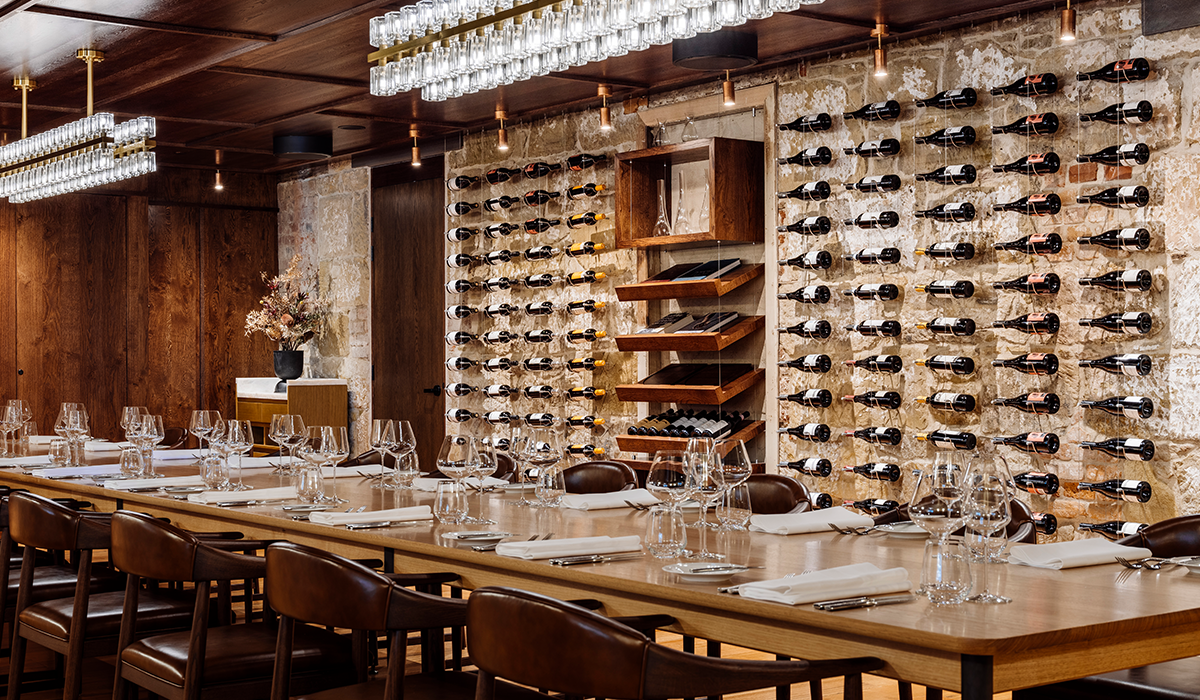
Michael also recommends riesling and grüner veltliner from Austria’s Wachau Valley, as well as reds from Burgenland, with both areas under the radar for many. Top grenache from McLaren Vale and the Barossa is his medium-term tip, while Margaret River cabernet – along with Barolo and Super Tuscans – is a good long-term wager. Emma also cites chenin blanc. “It’s such a great variety for ageing. You can get so many different styles, whether it be Swan Valley, South African, Loire… It’s diverse, and still relatively affordable.”
For Luke, dizzying Burgundy prices means looking further afield. That’s especially true at Agnes restaurant, which is housed in a refurbished heritage warehouse in Brisbane’s Fortitude Valley. Its moody sophistication, expansive and eclectic drinks list and Ben Williamson’s fire-fuelled cooking have seen it hailed as one of the country’s finest. Luke draws on a 1000-bottle cellar to populate the 400-strong list. “Cru Beaujolais is still very much under the radar for most collectors that aren’t trade … it can resemble red Burgundy when it’s been cellared well. I can’t believe that I’m saying this, but I also feel like the Northern Rhône, other than at the very top end, is under the radar a bit now… the top wines from St-Joseph, Crozes-Hermitage…”
Bordeaux is king of Loïc’s long game. “Keep at the right temperature, open in 15, 20 or even 50 years, and they will be the greatest bottles from your cellar,” he says, while also suggesting Champagne is often overlooked, and an even less-familiar path, nominating sauvignon blanc from top producers. “Recently, we did a vertical with Gembrook Hill, and their sauvignon blanc was showing better than their chardonnay.”

“A lot of people think that if I’m going to have a serious cellar,” adds Luke, “it’s going to be full of European wine, but we’ve seen a swinging back towards Australia. We’re selling a lot of things like aged Mount Mary Quintet or Clonakilla, those lovely bluechip wines. Looking at the price of top red Burgundy, they represent tremendous value.”
What ends up in a cellar and how you manage it is an entirely personal thing, and that’s how it should be, concludes Emma – it should bring joy. “One of my good friends has a cellar under his house. It’s not a proper cellar, but it’s a fun little room… except the roof is very low, so we always bang our heads. He’s the only person I know that still has a six-stacker CD player. So, we drink a couple of bottles while we listen to our favourite old CDs.”
Cellaring essentials
Where should I store my wine?
While the word cellar can have a serious tone, conjuring images of vaulted underground rooms and dust-cloaked bottles, cellaring is something all wine lovers can embrace. Modest cellaring time in a consistently cool spot can yield meaningful gains, but warm conditions can compromise wine integrity even in the short term.
What is the ideal temperature for cellaring wine?
Temperature is a critical factor for maintaining quality. Negative reactions increase exponentially over about 25°C, while wine over 40°C can be perceptibly altered in a few days. Naturally, ideal temperature is well below this, with 12°C to 14°C often cited, but a couple of degrees either side is perfectly acceptable.


